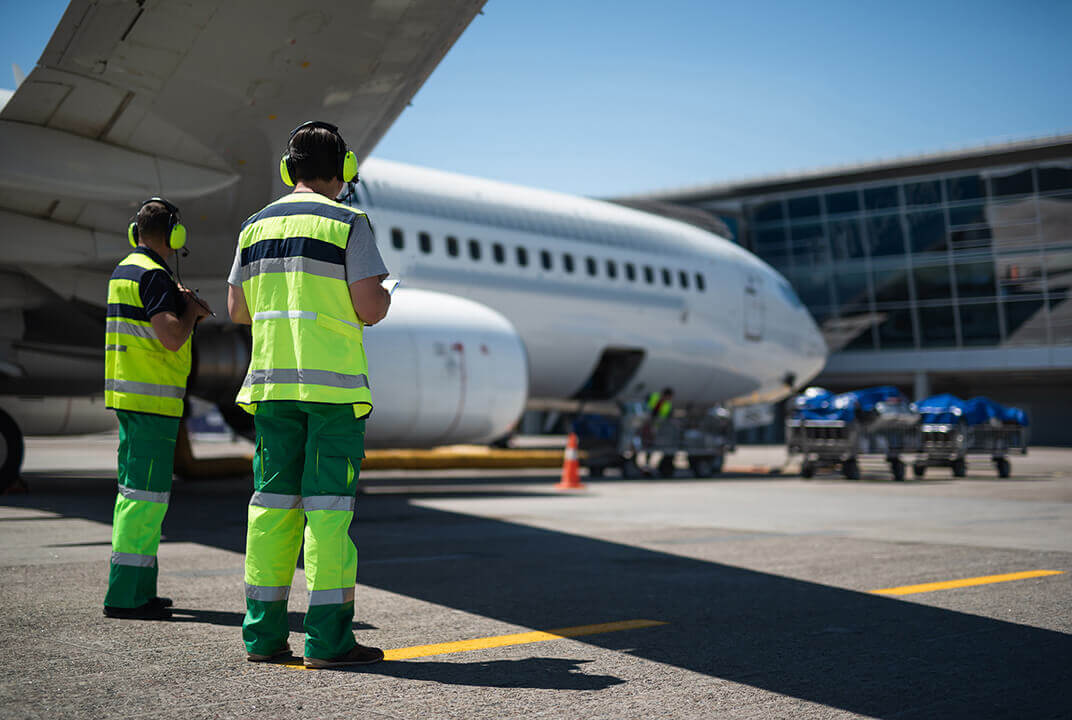Insight | A clearer path through crowded skies
A clearer path through crowded skies
Why SB-S will transform ATM CNS
SB-S (SwiftBroadband Safety) is the biggest step forward for operations and safety communications in over 20 years. Already in service, it provides real-time visibility into airline operations and enables fuel savings, better asset utilisation, increased airspace capacity and improved safety. It’s also key to creating more sophisticated concepts of digitised air traffic management (ATM).
Discussion around inflight connectivity tends to focus on passenger benefits, but these tools completely transform the way that planes fly and how airspace is managed.
Flight deck satcom will become even more critical to CNS
SB-S is a force for innovation, and is now flying with Hawaiian Airlines, United Airlines and Shenzhen Airlines. Its IP channels allow secure two-way communication and surveillance, which are two of the certified capabilities required for safe air travel. But that is only part of what SB-S delivers, and its effect on the digital transformation of airline operational concepts will be just as impactful as on air traffic management.
For years, Inmarsat has provided the industry-standard satcom - the Classic Aero system. It’s currently the market-leading voice and data safety service, used by more than 200 major airlines, jet operators and government agencies. It was revolutionary when it was launched and remains reliable and capable. Inmarsat’s technology continues to be at the forefront of innovation, with SB-S heralding a new digital era.
Both SB-S and Classic Aero provide the connectivity that enables the full suite of capabilities required to support Air Traffic Control services’ communications and surveillance.
Space-based ATM means more than just positional reporting
Like never before, the need for reduced separation standards in our ever-busier airspace has created a demand for satcom-based positional tracking. Benefits of positional tracking also include enhanced situational awareness, improved weather avoidance, and earlier detection of off-track errors.
It’s widely thought that the best way to reduce separation minima is by implementing a higher frequency of positional reporting, but positional reporting, the ‘surveillance’ part of CNS, is not enough on its own. Satcom-enhanced ‘communications’ are also crucial for a truly modern, future-proof concept of ATM to tackle our congested skies. This is something that the suite of capabilities that come with Inmarsat’s SB-S can guarantee. The goal is for more planes to be able to fly in the same volume of airspace – a huge consideration in busy regions such as Europe. On its own, positional tracking, no matter how frequent, can’t deliver this.
SB-S has a surveillance function called Automatic Dependent Surveillance-Contract (ADS-C). The inbuilt capability can be set to report at intervals of just seconds, which is more than adequate for reduced separation minima. That’s not all, as airlines can set the interval spacing themselves, supporting new safety concepts like ICAO's GADSS, for which airlines need to automate changes in frequency of positional reporting dependent on the status of the aircraft. GADSS also requires flight data recoverability, and SB-S allows aircrafts to stream all flight data in real-time during a distress situation.
Communications capability is enhanced with VoIP in the cockpit, enabling clear communication between pilots, the AOC, and air traffic controllers by allowing multiple mobile-phone quality conversations between the aircraft and ground simultaneously. These conversations will have no effect on data transmission. VoIP supports communication in-flight by increasing the quality, speed, and volume of data between pilots and ATC. With flight route charts updating straight to pilots’ connected EFBs, IP connectivity in the cockpit will also mean satcom-enabled navigation can minimise the impact of disruptions.
SB-S not only has the power to transform ATM, but also enables operational cost savings
As well as the potential to digitise air-traffic management, SB-S enables multiple operational cost savings. Safely separated from any passenger internet connection in the cabin, SB-S on its own provides all the throughput capacity required for a rich exchange of data with low latency. More data means more intelligence for better operational decision-making and optimised asset utilisation.
SB-S can also create greater efficiency on the ground. Notice of maintenance issues are transmitted ahead, enabling maintenance teams to solve the problem faster, resulting in faster aircraft turnaround times. Real-time engine and systems performance monitoring in-flight will drive predictive maintenance efficiency gains, and result in better asset utilisation. Additionally, pilots can access real-time weather information from their securely connected EFB to create a smoother, more fuel-efficient route.
What you need is only available from one provider
SB-S is the only system of its kind. It covers all global commercial air routes, is robust in all weather conditions, and has a service reliability of 99.9%. Inmarsat’s evaluation partners are helping to prove its full range of capability.
Like Classic Aero before it, SB-S is the industry gold standard for space-based air traffic communication and surveillance. Safety will improve across the world thanks to the digital transformation powered by SB-S.


